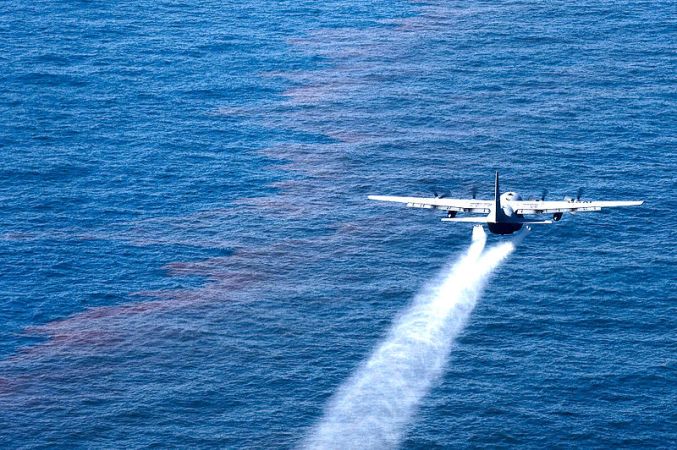

In the Arctic, rapidly melting ice is the surest sign of climate change. In less northern latitudes, it’s the increasingly early onset of spring or the rising frequency of severe weather. On Mid-Atlantic and Gulf Coast shores, though, the loudest example of the impacts of warming temperatures are the stands of dead trees known as ghost forests.
“Ghost forests are the best indicator of climate change on the East Coast,” says Matthew Kirwan, a professor at William & Mary’s Virginia Institute of Marine Science studying coastal landscape evolution and author of a recent review in Nature Climate Change on the appearance of these forests. “In rural, low-lying areas, there are so many dead trees and farmland that’s either stressed or abandoned that the signs of sea level rise are obvious.”
Sea level is expected to increase between 0.4 and 1.2 meters (that’s 1.3 to 3.9 feet) by 2100. And on the East Coast between Massachusetts and North Carolina, sea level is currently rising three times faster than the global average. This is due in part to a long-term geologic processes: when ice sheets weighed down northern areas of the country during the last Ice Age, land adjacent to the ice rose up in a see-saw effect. Since the ice melted, that ice-adjacent land—including the Mid-Atlantic coast—has been sinking back down. It’s also related to a slowing Gulf Stream; as a result, less water is being moved away from the Atlantic coast.

Much of the Mid-Atlantic and Gulf Coast areas threatened by sea level rise are private, rural lands made up of forests and farms. As saltwater seeps into the forest soils, the trees die of thirst because their roots cannot take up water with high salt content. They may grow weak and die slowly, or, if a storm brings in a flood of seawater, a whole stand of trees might drown at once. What’s left behind are bare trunks and branches—a ghost forest. “When I moved down to the Mid-Atlantic, I was totally struck by these bleached, dead trees,” says the review’s coauthor Keryn Gedan, tidal wetland ecologist at George Washington University. “It was so extensive that I immediately wanted to study it.”
In the Chesapeake Bay area, over 150 square miles of trees have turned to ghosts since the mid 1800s, the review notes. And about 57 square miles of forests along the Florida Gulf Coast have met a similar fate in the past 120 years. Since 1875, ghost forests have been growing at an increasing rate.
As the leaves and needles fall off these dying trees, a community of salt-tolerant marsh plants moves in. It’s not necessarily a bad thing. In fact, coastal wetlands are some of the most valuable ecosystems. These plants filter out pollutants and excess nutrients in the waters that flow into them, they protect shores from erosion by waves, and they store even more carbon than forests do. Coastal wetlands also slow floodwaters, protecting properties and lives from the destruction of storms. “If you’re looking for storm protection, tidal wetlands are a great thing to have,” says Gedan.

As sea levels rise, it’s unknown whether the total area of coastal wetlands on the Atlantic coast will increase or decrease. This depends, in part, on whether the marshes can move upslope fast enough to outpace the water drowning them. Another factor is how landowners will respond to the salty water creeping toward their properties. A ghost forest has little value for timber, and salty soil kills crops. Landowners might become inclined to build structures to block the seawater.
But because of the importance of these ecosystems—the habitat they provide and the many services they give us—Gedan hopes that’s not the case. “We have to both work to understand landowner behavior in response to sea level rise, and we need to guide landowners’ decisions with information for them and incentives to promote the behaviors that we want to see,” she says. “If we want to see coastal wetlands in the future … then we need to incentivize landowner behavior that will allow upland conversion to occur.”
That could mean developing programs that pay landowners to let the ghost forests and salt marshes move in. It could also mean offering landowners advice on how to reap the most benefit from their land as it makes this transition, such as by helping an owner of forested land know when to fell trees to profit off their value as timber (dying or dead trees aren’t worth much).
In the future, some areas will grow more ghost forests than others. Along less steep coasts, saltwater and marshes can more easily move inland. On the Gulf Coast, seawater is expected to inundate three times as much as the current area of coastal wetlands, which means we could have that much more marshes in the future. But scientists are not sure whether these new wetlands will be of the same quality as ones currently being drowned under rising seawater. A lot of new ghost forest-wetlands of the Delaware Bay area, for example, are dominated by invasive reeds, so native wetland plants—and the animal species that depend on them—can’t live there.
As much as we may try to carefully adapt to the impacts of human-caused climate change, it’s challenging to simply recoup the ecosystems we’re losing. Says Kirwan, “If we get a gain or break even [with coastal wetlands], will the ecosystem function the same even though it’s a different kind of marsh?”

















![The Latest On Hurricane Sandy’s March Up The East Coast [Live Update]](https://www.popsci.com/wp-content/uploads/2019/03/18/NMBQGEOFNA5JIJRC5LRLYDRHPA.jpg?w=525)





